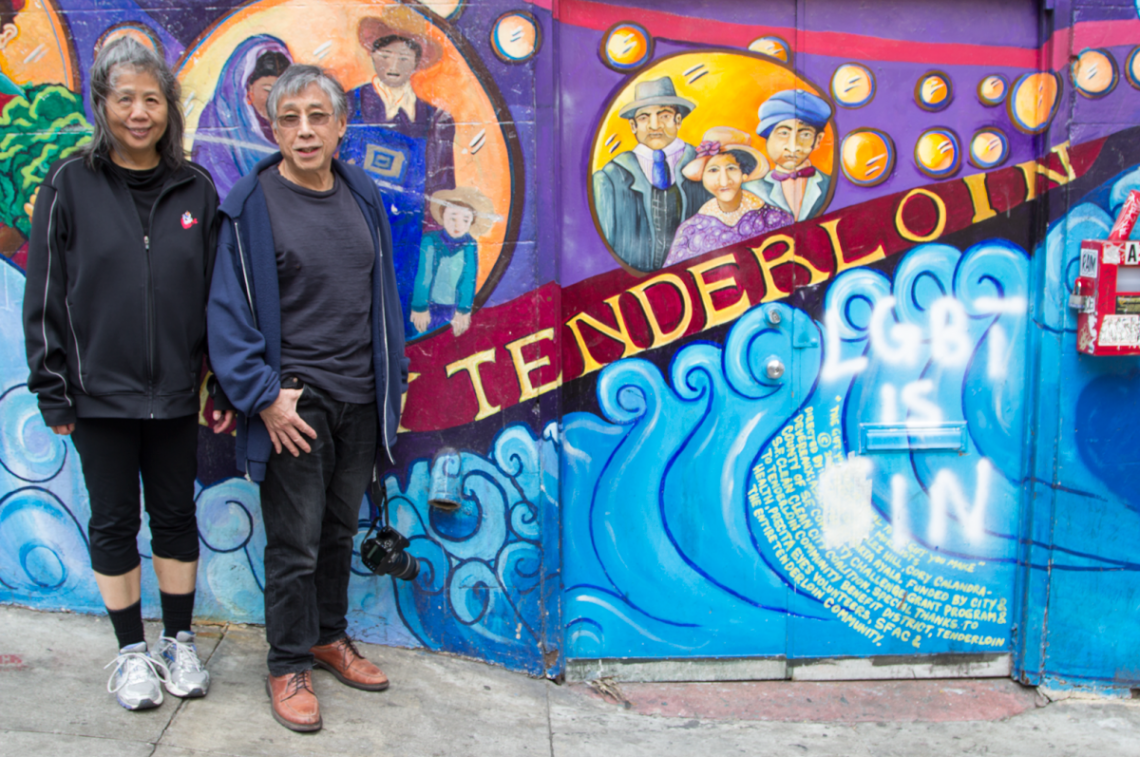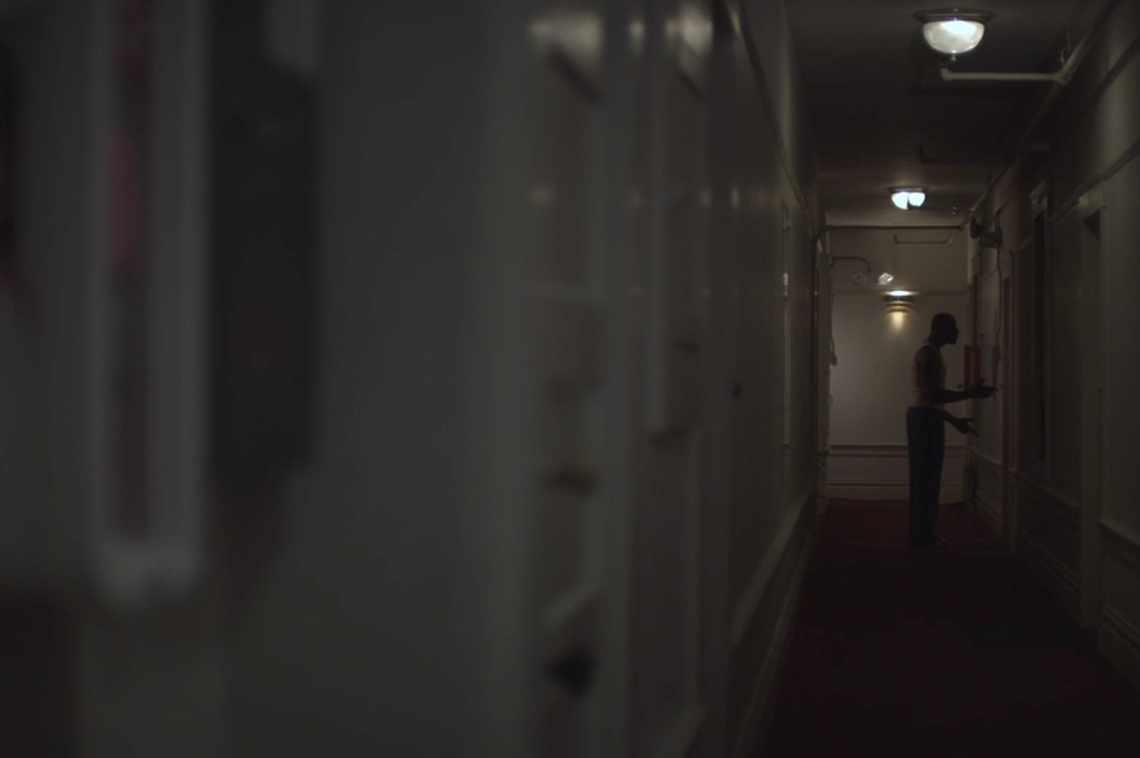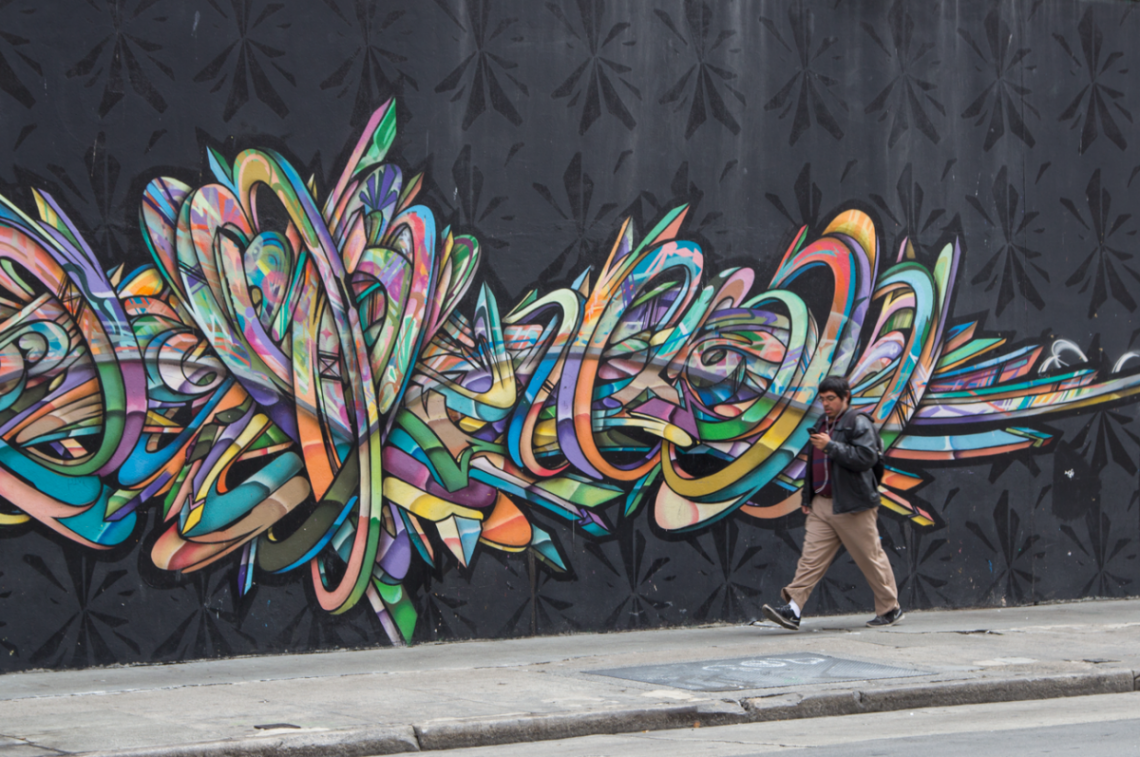


In 2014, Wildflowers received a $180,000 grant from ArtPlace America to conduct a census of Tenderloin artists. Forecast Public Art wrote at the time that their "door-to-door canvassing focused on the SROs, (single residency occupied) an architectural feature the Tenderloin has managed—so far—to retain, and which provides an oasis of affordability in a rapidly gentrifying city, one of the most expensive in America. Hanmin Liu said "For many of the residents who end up in the Tenderloin, it’s their first stop in America or it’s their last stop. It’s a community of people who have found themselves together not particularly by their own choosing, but because this is where they have to live. The Tenderloin stinks. It’s full of urine. You see needles all around. It is gritty, it is tough, and it is poor.” It’s a place where the smallness of the accommodations usually means that people don’t stay inside, the streets become a de facto living room. And yet, despite all that, or perhaps partly because of it, the Tenderloin manages to provide an environment that welcomes and sustains artists."
We wanted to hear from artists of color in the Tenderloin about tough times they are no stranger to. So we talked with Hanmin and Jennifer, co foundees of Wildflowers and asked them to see if any artists wanted to contribute to the conversation.
Hanmin told us “This is a pregnant moment to plan to do things differently in challenged communities. The ramifications of the protests led by Black Lives Matter alongside the COVID-19 pandemic will create opportunities for both systems change and community healing. Artists are making explicit what needs to be done to improve the conditions for all people, but especially the most vulnerable, to help them grow together. We’ve compiled some work from Tenderloin artists - stories about living in close quarters, tragedy and the effects of ordeals on the family; conflict resolution from within; and a journey to one’s soul. The stories are created by four independent self-taught artists of color who offer a deeper understanding of what makes life in their community worth living for."
"All the Heart Can Hold" by Jesse James Johnson
This Chicano-Tejano poet has lived the last twenty years in the Tenderloin, Twelve of those in the same SRO in which he currently resides. He submitted artwork for consideration of a Hidden Gems award that focused on conflict resolution, not by police interventions but by members of the community themselves. In his essay, “All the Heart Can Hold,” Jesse takes issue with one of his neighbors, a gentrifying, middle-class white woman, who called the police to stop a fight in her building. This is an excerpt.
Dear Sandra and Macy,
So Emilio was really jamming out, Sunday night. I hear they were drinking and got into another fight. You called the cops. I wish you had waited and called me when I got home. When we first met you seemed like cool people. You said you were okay with the neighborhood, that you liked the people here. Maybe I mistook what you said, I thought you wanted to help us not run us off. Both Emilio and his boyfriend are going away. His boyfriend had an old warrant that got dug up - drug charges from way back. He won't be coming back. He didn't even have a Green Card. Emilio’s getting slammed with domestic violence even though his boyfriend says they weren't really fighting. It’s going be serious for Emilio. He has assault charges on his record already, so he’ll probably end up in again.
Neither one of them deserves to be in prison. Calling the cops was stupid mistake. It's a bad habit a lot of people share. I understand why people call them. I’m pissed that with one phone call can ruin so many lives. Emilio has a wife and a twelve-year old daughter in Reno. His boyfriend was sending money to his grandparents and a kid brother somewhere in Vera Cruz. You need to own that. Give it some hard thought next time you find yourself awake at three in the morning. I’m tripled pissed that a middle-class white woman makes a call and the cops actually show up!
BTW- Don't even think about telling any of your friends that there might be a vacancy here. I mean it.”
Dorian Brockington “Sometimes We Hum”
Tenderloin resident actor Dorian Brockington stars in Cliff Traiman’s, video, “Sometimes We Hum” which portrays a man living in single room occupancy housing (SRO) dealing with a neighbor who is loud and insensitive to his need for peace and quiet. Drawing on social and racial stereotypes it is a story of one man dealing with the frustrations of urban living. An ex- Marine wants nothing more than to enjoy a peaceful evening at home. When his obnoxious, neighbor makes that impossible, he takes command of the situation in an unexpected and most delightful way.
Bisola Marignay’s play “After Angels Fall”
Bisola Marignay won a 'Hidden Gem" award in 2014, and is an anthropologist, activist & media communication consultant who developed Creative Writing Therapy© in 2009 as a means of supporting individuals in achieving writing goals through self-understanding. Here, she introduces her play which is a heart-wrenching tragedy of the true story of George Stinney Junior, a 14 year old African American boy that was wrongly accused of the murders of two girls ages 7 and 11 in South Carolina in 1944. The play tells of the struggle of his family to come to terms with his death. The work raises up what – to this day- the families, the community, and our society must do to overcome the cancer of racism. It seems like little has changed since then- with police still killing Black people with impunity.’
"I’ve Never Been to Me" by Gayle Rosemond
Last, Tenderloin resident of an SRO Gayle Rosemond sent us this message during the time of shelter-in-place: “We all are having to deal with our own soul. I remember this Sufi who said north, south, east, or west, doesn’t matter as long as your journey is within.” Gayle is an award winner of the Hidden Gems programs, and she sings her story in clubs and on the streets of San Francisco. She sent me an audio clip of a song about her inner journey, “I’ve Never Been to Me,” originally sung by Charlene and written by Ron Miller and Kenneth Hirsch (1982). Listen here.
One of the lines that resonates with me is what she says at the end: “. . . only love can make people free.”
All these stories reveal grief and suffering caused by traumatic events and the emergence of an innate centripetal force of energy to heal individuals, families, and neighborhoods.
These stories challenge us everywhere to figure out how to strengthen the conditions that advance the energy to heal within the community.
. . .
For more on this project, check out our photo essays "Community-Driven Healing" and "The Healing Power of the Arts"





